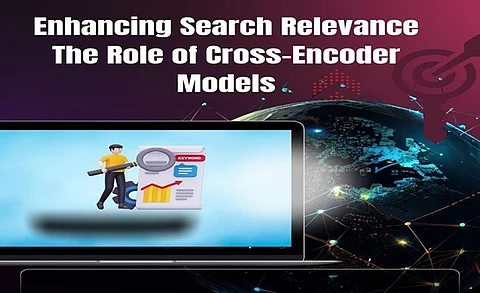

Siddharth Pratap Singh, a researcher in advanced search technologies, presents pioneering developments in cross-encoder models in this information age where the access to information shapes innovation and decision-making. His work redefines how search relevance is achieved across domains, offering scalable, efficient, and context-aware solutions that meet the evolving needs of diverse industries and applications.
In the past, traditional ranking systems used feature-based methods such as TF-IDF and BM25; however, modern deep learning approaches initially followed dual encoder architectures. In both approaches, often, there are efforts put into solving complex queries efficiently. Traditionally, and using dual encoder systems, queries and documents are treated differently, which implies vocabulary mismatches and very poor semantic understanding. Cross-encoder models overcome the above limitations as they process the query-document pair jointly, relying on transformer architectures for deep semantic matching. The shift away from manual feature engineering and towards context-aware ranking decisions improves the user experience. It redefines the way search systems interpret complex relationships, aligning with modern requirements for semantic accuracy and adaptability.
The cross-encoder models are based on transformer-based architectures that make use of self-attention mechanisms to analyze the interactions between queries and documents in depth. By processing queries and documents simultaneously, these models capture intricate dependencies between terms, thereby refining assessments of relevance.
Hierarchical attention mechanisms focusing on different levels of text granularity
Token pruning optimizing performance by focusing computational resources on crucial data sections
Contextual embeddings capturing nuanced meaning variations based on surrounding content
This architecture establishes new standards for the search technology involved, balancing both precision and computation efficiency.
The latest variants of cross-encoder models also include state-of-the-art efficiency and scalability under different operational environments. Dynamic negative sampling selects some of the harder training examples as it ensures to make relevance distinction robust. A knowledge distillation transfers capabilities of larger models toward smaller efficient ones, reducing the overhead without diminishing the accuracy level. Hybrid architectures with cross-encoders and bi-encoders balance initial efficiency in retrieval and high-quality reranking, hence ideal for very large-scale applications. These innovations ensure that as the complexity of data increases, cross-encoders remain pertinent, relevant, and efficient.
Transformative potential exists across multiple domains and fields of application for cross-encoder models:
Scientific Literature: Increased search capabilities, leveraging bibliometric data to detect relationships between scientific research publications improve precision in complex queries.
Legal Information: Advanced named entity recognition and semantic classification allow for the correct retrieval of legal precedents and references.
Healthcare: Adaptations tailored to process clinical data and medical terminology ensure accurate clinical document searches and retrieval of treatment protocols.
Technical Documentation: These systems bridge the gap between natural queries and developer-focused content by understanding code structures and technical specifications.
Educational Resources: Semantic classification aligns learning content with educational goals, personalizing recommendations for learners and improving content accessibility.
These domain-specific applications illustrate the flexibility of cross-encoders in handling industry-specific challenges and requirements.
Empirical evidence is shown to better performance of cross-encoder models compared to the traditional ranking systems. Improvements in metrics like Mean Average Precision (MAP) and Normalized Discounted Cumulative Gain (NDCG) demonstrate the ability to better handle complex queries. Statistical validation confirms that such improvements are always impactful and consistently delivered across a variety of datasets and operational conditions. The balance between precision and scalability ensures these systems meet the high demands of modern information retrieval systems in competitive domains.
Although cross-encoder models work well for relevance ranking, scalability and computational efficiency are still important challenges for broad adoption. Distributed architectures and edge computing solutions hold much promise to address these challenges in modern search systems. Techniques such as resource-aware scheduling, model parallelism, and latency reduction improve hardware utilization and system performance. Predictive early exit mechanisms enhance response times, so these models are efficient and scalable in real-time, high-demand environments.
Future of cross-encoder models would lie in integrating with new emerging technologies and distributed computing frameworks. Their potential for IoT and edge computing enables the seamless deployment of intelligent search systems across various distributed environments. Their development toward sustainable computing practice helps these systems address sustainability needs within modern technological ecosystems. Its ability to scale and adapt to emerging needs is likely to maintain them as tools in information retrieval and knowledge management that evolve and help meet their demands.
In conclusion, Siddharth Pratap Singh enlightens one on the tremendous potential of cross-encoder models. So it becomes a cornerstone for new generation search technologies-a bonanza that will help further establish progress in information retrieval. It serves its purpose by eradicating some of the conventional limitations and allowing context-aware efficiency while designing solutions. This sets a new milestone in relevance ranking robust, scalable, and innovative systems redefining how information is accessed and used. Their integration across different industries ensures that they have a long-term impact and role in shaping the future of digital ecosystems.
